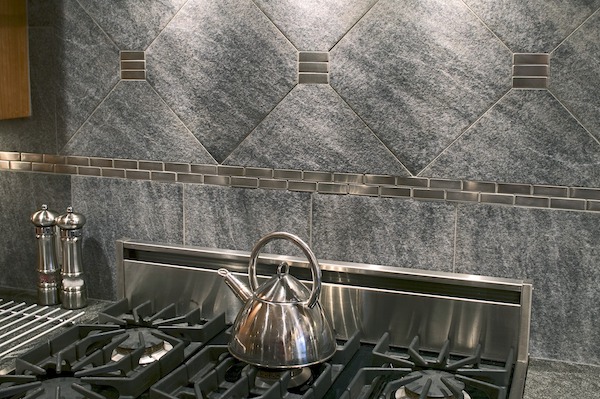
You can find stainless steel on countertops, back splashes, cabinetry and appliances throughout a home. This material offers great durability, less maintenance and a sleek look. Unfortunately, no surface is truly maintenance-free. Follow these tips to help clean this surface with ease.
Basic Stainless Steel Cleaning
- Wipe the surface down with a mild soap or detergent.
- Avoid cleaning products unless they are specifically approved for stainless steel surfaces.
- Rinse the surface with water.
- Dry the surface with a soft cloth for a clean, streak-free finish.
Tip: There’s no right answer to when you should clean your stainless steel – just cleanse it when it looks dirty. Prevent smudges and grime by having a professional cleaning service perform regular maintenance on these surfaces.
Stainless Steel Maintenance: Passivation
If a simple soap and water cleaning doesn’t do the trick, you may need this chemical treatment. Passivation (also known as chemical refinishing) is an acid treatment to remove different kinds of contaminants from your stainless-steel surface. This treatment can help with the following:
- Free iron deposits that mix with the surface of your stainless steel, resulting in reduced corrosion resistance.
- Removes the layer of chromium on your stainless steel to fully restore the surface.
Tip: This process involves the use of dangerous chemicals, and extreme precaution should be used. Hire a professional to see if you need this treatment and ensure the job gets done right.
Stainless Steel Repair
If you notice corrosion on your stainless steel surfaces, consider having it repaired by a stainless steel repair professional.
- Corrosion can occur rapidly, so treat the problem as soon as possible.
- Keep surfaces clean and check frequently for damage to prevent corrosion as much as possible.
 Dryer Vent 101
Dryer Vent 101  How to Clean a Microwave
How to Clean a Microwave  How To Clean an Oven
How To Clean an Oven  Cleaning Stainless Steel Appliances
Cleaning Stainless Steel Appliances  Cleaning Your Exteriors With a Pressure Washer
Cleaning Your Exteriors With a Pressure Washer 

I have a dent in my stainless steel refrigerator needing fixed.